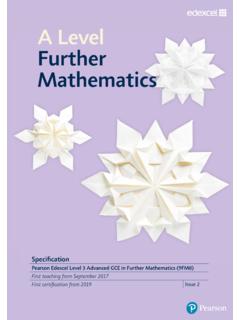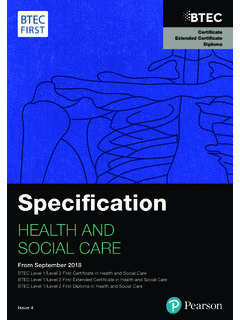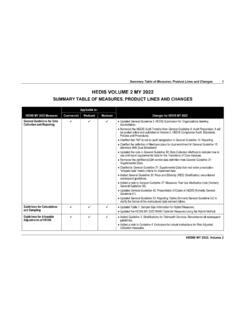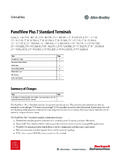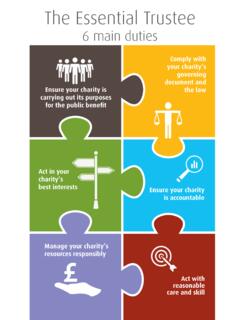Transcription of School census 2021 to 2022: autumn - GOV.UK
1 School census 2021. to 2022: autumn School summary report technical specification, version September 2021. Contents Version history 4. Introduction 5. Presentation 6. summary report 8. Table 1: School characteristics [ALL schools] 8. Table 2: Pupils on roll by age and gender [ALL schools] 9. Table 3: Pupils on roll in each national curriculum year group by enrolment status [ALL. schools] 12. Table 4: Pupils on roll by their first language [ALL schools] 13. Table 5: Specific types of pupils on roll [ALL schools] 14. Table 6: Funded and extended childcare hours for pupils on roll aged 2, 3 and 4 years [Not for: Non-maintained special School and city technology college] 16. Table 7: Early years pupil premium nursery schools [For: Schools with phase NS'. ONLY] [used for funding] 17. Table 8: Early years pupil premium [Not for: Nursery schools] [used for funding] 18.
2 Table 9: School childcare [ALL schools] 18. Table 10: Pupils on roll with SEN provision [ALL schools] 18. Table 11: SEN need type for pupils on roll with SEN (SEN provision E' or K') [ALL. schools] 19. Table 12: Number of suspensions and permanent exclusions by SEN provision in the 2021 spring and summer terms (terms 3, 4, 5 and 6) [Not for: Nursery School ] 20. Table 13: Attendance information for the 2021 summer term (terms 5 and 6) for all pupils aged between 5 and 15 years as at 31/08/2020 [Not for: Nursery School ] 22. Table 14: Attendance information for the 2021 summer term (terms 5 and 6) for all pupils aged 4 years as at 31/08/2020 [Not for: Nursery schools] 26. Table 15: Attendance by reason for the 2021 summer term (terms 5 and 6) for all pupils aged between 4 and 15 years as at 31/08/2020 [Not for: Nursery School ] 29.
3 2. Table 16: Admission appeals [Not for: Nursery School , special and PRU][Note: Primary admissions appeals include Infant admissions appeals] 31. Table 17: Classes as taught at the School 's selected time [For: Primary only] 32. Table 18: Classes as taught at the School 's selected time [For: Middle-deemed primary and middle-deemed secondary only] 32. Table 19: Classes as taught at the School 's selected time [For: Secondary only] 32. Table 20: Classes as taught at the School 's selected time [For: All-through only] 32. Table 21: Pupil reconciliation [Not for: Nursery School , special and PRU] 33. Table 22: Unlawful infant classes number of reported exceptions by category [For: Primary and All-through with appropriate pupils] 33. Table 23: Universal infant School meals [ALL schools with appropriate pupils] 33.
4 Post 16 learning aims 34. Table 24: Post 16 learning aims - number of learners with learning aims which started this academic year - from 1 August 2021, or which are continuing from previous academic year(s) [For: Secondary, all-through and PRU] 35. Table 25: Post 16 learning aims - number of learners with learning aims which were active in the previous academic year from 1 August 2020 to 31 July 2021 [For: Secondary, all-through and PRU] 38. Table 26: Post 16 learning aims - number of learning aims that started this academic year - from 1 August 2021 or continued from previous academic year(s) [For: Secondary, all-through and PRU] 44. Table 27: Post 16 learning aims - number of learning aims which were active in the previous academic year from 1 August 2020 to 31 July 2021 [For: Secondary, all-through and PRU] 46.
5 Table 28: Maths and English prior attainment (for block 2 disadvantage funding) [For: Secondary, all-through and PRU] 51. Table 29: Maths and English funding exemptions [For: Secondary, all-through and PRU]. 52. Table 30: Number of pupils by planned learning; planned employability, enrichment and pastoral; and, planned learning and planned employability, enrichment and pastoral hours band [For: Secondary, all-through and PRU] 53. 3. Version history This gives details of changes made in version to the specification since 2020 to 2021. and then the changes made in any subsequent versions. Global changes: All dates rolled forward Kirsty Knox Table 12 Table and rules updated - previous autumn 24 May 2021. term removed Table 13 and 14 Re introduced tables and updated rules Table 15 added. Resulting in re-numbering of all subsequent tables.
6 Table 28 XML tags updated within rules for <MathsGCSEP riorAttainmentYearGroup> and <EnglishGCSEP riorAttainmentYearGroup> to <MathsGCSEP riorAttainmentYear11> and <EnglishGCSEP riorAttainmentYear11>. Table 12 updated rules table 16 September 2021. 4. Introduction This specification is for the 2021 autumn School summary report and is designed to provide key School level information from the pupil and School level modules in the census return in an easy to read format. Please note: all references to schools' in this document refer to pupil referral units /. alternative provision (PRU / AP) as well. The School summary report is generated automatically by the School 's management information system (MIS) software. It fulfils a number of purposes: to allow School staff preparing the return to check its accuracy and completeness before passing it to the head teacher to allow the head teacher authorising the return to check its accuracy and completeness before submitting the return to the local authority or the department as appropriate where the summary is forwarded to the local authority, it enables them to check the return from the School provides the department with assurance that the return has been subject to plausibility checking by the School and, where appropriate, the local authority allows the head teacher to keep track of absence figures - particularly persistent absentees 5.
7 Presentation Section 3 of this document specifies the format and content for the School summary report for the 2021 autumn School census together with the business rules for calculating the numbers in the cells of each table. The School summary report must use the School census extract file. The data is presented as a series of tables such as Table 1 - School characteristics. XML tags have been used in the business rules to identify the data items. Square- bracketed numbers, such as [A5], are included in the tables in section 3 to provide a cross-reference to the business rules. The bracketed numbers should not appear in the summary report itself. The collection ( School phase) marker' is used to show the applicability of each table to each School phase that is where: Table 5: pupils on roll by their first language The collection ( School phase) marker' would indicate: [ALL schools].
8 Thereby indicating that this table is applicable for all types of School . The business rules state the phase codes to which the rule applies so, in this example: Applies to schools with <Phase> equals NS', PS', MP', MS', SS', AT', SP' or PR'. Some of the rows within tables apply only to a sub-set of schools. Notes against the business rules indicate if there are particular phases of School for which these rows are or are not generated within a table. For example, in Table 1, provision for child mothers', number of teen mother places' and provision for childcare' only apply to schools with a phase of PR'. This is stated in the business rules for Table 1 and the three rows within the table that correspond to these data items are only generated for schools with a phase of PR'. The business rules have not been given for every cell in the tables to keep the number down to a minimum.
9 Where there are cells containing the same information for different categories, the rule has been given in the first cell for the first category and will need to be adapted for the other categories. For example in Table 2, rule [B1] has been given for the number of full-time male pupils aged 19 and over and this will need to be adapted to give the rules for the total of full-time male pupils for each age shown. All references to pupils' age are as at 2021-08-31 unless otherwise stated. There is a summary line at the top of the School summary report that shows the number of errors and queries present in the data . This is equivalent to running the validation rules 6. as shown in the 2021 to 2022 School census business and technical specification and displaying the totals. Those suppliers using the XSLT components supplied by the department will be able to use the validation modules to generate this total and display it at the beginning of the summary report.
10 The two variables, [error count] and [query count], refer to these totals and are not defined in the business rules. 7. summary report Table 1: School characteristics [ALL schools]. Output There are [error count] errors and [query count] queries. Table 1: School characteristics [ALL schools]. Characteristic data summary for [ School Name] [A1]. Local authority code [A2]. Establishment number [A3]. Telephone number [A4]. Email address [A5]. Phase [A6]. Type [A7]. Governance [A8]. Intake type [A9]. Lowest national curriculum year group [A10]. Highest national curriculum year group [A11]. Business rules Applies to schools with <Phase> = NS, PS, MP, MS, SS, AT, SP or PR. Rule Rule specification Notes number A1 <SchoolName>. A2 <LEA>. A3 <Estab>. A4 <PhoneNo>. A5 <Email>. 8. A6 <Phase>. A7 <SchoolType>.












